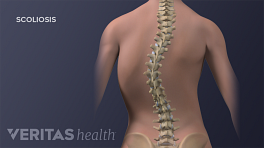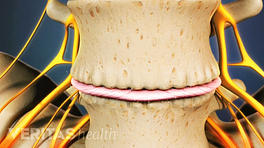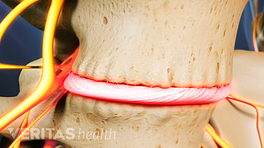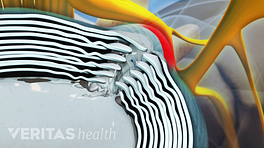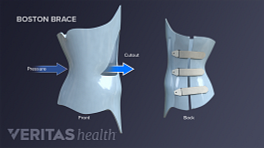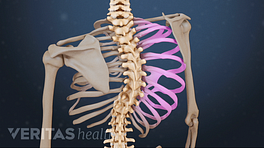Degenerative scoliosis, also known as adult onset scoliosis, is a sideways spinal curve with at least a 10-degree Cobb angle caused by spinal degeneration.
It most commonly occurs in the lumbar spine.
Degenerative scoliosis is caused over time by the wearing down of intervertebral discs and facet joints. When this degeneration happens faster on one side of the spine compared to the other, a scoliosis curve can develop.
If a nerve root exiting the spinal column becomes inflamed or compressed due to the spine’s degenerative changes, such as bone spurs or a herniated disc that leaks inflammatory proteins, lumbar radiculopathy symptoms of shock-like pain, pins-and-needles tingling, and/or numbness can radiate down into the buttock and/or leg.
If the lumbar spine canal narrows and spinal stenosis develops, compressed nerves could result in leg pain and cramps that develop while walking but go away when sitting down.
As degenerative scoliosis progresses, the spine continues to rotate and bend, which can lead to noticeable postural changes, such as hunching forward, or uneven shoulders or hips.

